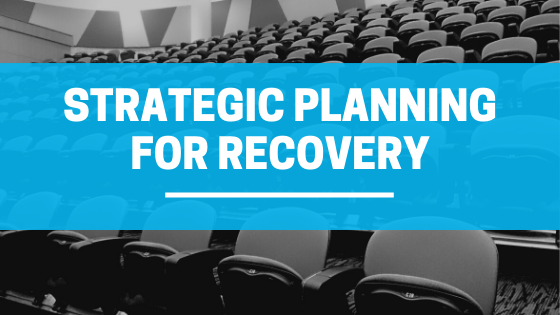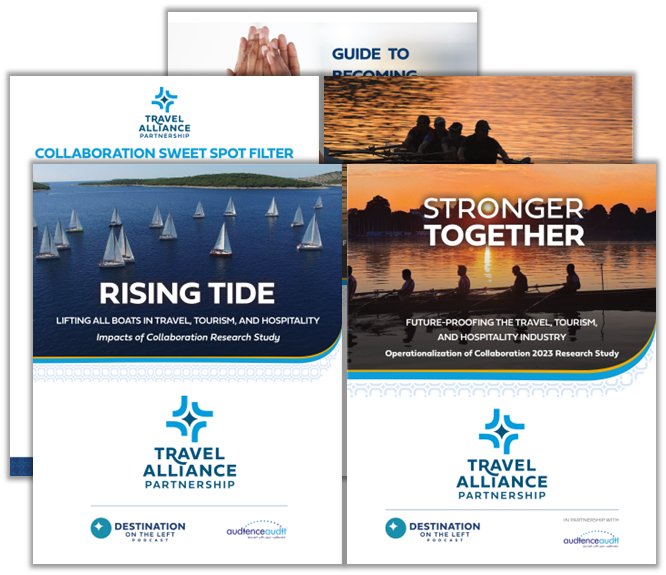Strategic Planning for Recovery
Author and motivational speaker Simon Sinek said it best, “These are not unprecedented times. There are many cases where change or something unexpected has put many companies out of business and made other companies come out stronger and reinvent themselves.”
As we’ve watched this pandemic unfold over the past couple of months, we’ve been witness to the creativity and flexibility of many brands in real time. Like conferences and events moving to virtual experiences and attractions creating digital offerings to continue to engage with their visitors. It is this forward thinking that will not only carry brands through this pandemic, but will also set them up for success on the other side.
Rick Antonson, former president and CEO of Tourism Vancouver, recently echoed this sentiment, saying, “Your most important work is ahead of you.”

Why Plan?
Chances are that you started 2020 with a marketing plan – or at least an idea on how you were going to spend your budget. But the world around us has changed and it continues to change daily. You may no longer have the budget you once had. Or the staff members to execute your plan. Or the (open) tourism assets to promote.
We don’t know what the future holds but we have a strong idea that the way people live, work and travel is going to be different. With the introduction of social distancing to society, we will likely see a paradigm shift come from the pandemic. Now is not the time to double down on what you have always done. It’s important for destination marketers to take a step back, reevaluate their marketing plan and move forward into planning for recovery with a fresh strategic approach.
Thomas Müller of rainmaker digital even called the crisis, “a once-in-a-lifetime opportunity” for destinations and the tourism industry to “restart their business much better off than they have entered into this crisis.”
As humans, we go through a physiological reaction when we face a perceived threat or attack. During times of stress, such as the pandemic, we may react in three ways: fight, flight or freeze.
Andy Crestodina of Orbit Media Studios explained, “It’s both harder and much more important to be strategic during times of stress. Our response behavior to the crisis determines where we end up on the other side.”
Now is the time to decide how you react:
- If you freeze, you are panicked which means you are fear focused and unable to move your organization forward.
- If you respond with flight, you are prepped for the future but unfocused on how to get there. You are throwing tactics at the wall and seeing what sticks.
- It is the fight response that makes you positioned and strategy focused, leading you to rebound.
The recovery is coming. Now is the time to refocus on your foundations.
What Recovery Looks Like
There are four phases of the COVID pandemic recovery, as explained by Sinclair, a PR, digital, experiential marketing communications agency based in China.
Phase one is the immediate response. It is not the time for brands to sell, but instead to focus on community support.
Phase two is pivot and adapt. Brands need to move swiftly to meet consumers’ new requirements and needs. During this time, brands need to put energy into home-based activities and entertainment as well as staying connected to their audiences.
Phase three is market revival. At this point, the outbreak is largely contained but society still needs time to adjust and trust. Destinations should consider creative campaigns to re-engage visitors. On a positive note, travel and tourism, dining out and live entertainment see immediate return to growth.
Phase four is recovery. Prepare for recovery by ensuring all aspects of your come-back campaign are ready to launch when the time is right.
“Brands that prepare for recovery will build strong foundations for future growth. Recover planning takes time, insights, creativity and business-wide commitment. Start early and include a variety of business functions when brainstorming ideas to revive your brand.” – Sinclair
Strategic Planning for Recovery
Planning for recovery is the most critical thing you can do for your organization. We have always felt that to be true but especially during these times, planning is the first step in being ready for tourism recovery. Furthermore, strategy is at the heart – and the start – of all of Break the Ice Media’s plans and projects. While it is easy to jump right into tactics, we follow a seven-step process to create marketing plans that are backed by data and strategic thinking. This moves you from “gut feelings” to informed decisions. Each step of the process advises another piece of the plan, creating an integrated, holistic approach that drives results.
We are fortunate to know companies measuring travel sentiment and the impact on tourism since the pandemic first began in China. These insights will greatly advise tourism recovery plans, pointing to an emphasis on drive market travel before overnight and international trips, and the need to prepare for a more cautious type of traveler.
Some considerations for your post-pandemic strategic plan:
- Speak to the heart
- Use strong call to actions
- Promote safety and available health measures
- Highlight off-the-beaten path activities or attractions
- Create day-trip itineraries for drive markets
- Evaluate all marketing channels, even those created during the pandemic
- Reward loyalty
- Incentivize visitors with packages and deals
- Collaborate within your industry or region
- Work with influencers, consider local influencers before fly-markets come back
Seven-Step Strategic Process
Break the Ice Media has 10 years of experience in strategic planning, over which we have honed our seven-step strategic process.
- Research & Discovery: Building your research library with primary and secondary research
- Situational Analysis: Documenting your background and identifying strategic insights to help your destination stand out
- Goals & Objectives: Defining SMART goals and applying objectives and key results
- Audience & Strategy: Establishing informed marketing strategies and identifying your target audience
- Tactical Plan: Applying the PESO method to create an actionable plan
- Measurement: Defining KPIs and reporting results
- Action Plan: Implementing your strategic marketing plan
By the end of the process, you have a detailed, actionable plan backed by research and strategy. This will help you position your destination as you enter recovery.
Break the Ice Media is offering a new online course, “Strategic Marketing Planning for Post-Pandemic Recovery” which will take you through all seven steps, complete with our processes, checklists and tools.
To make the planning process easier for you, weekly classes consist of video lessons that walk you through each section of your plan and include supplemental resources and homework assignments. In addition, each course participant will be assigned a Break the Ice Media consultant to review each assignment and provide feedback to help you move through the planning process.
Author
Related Posts
How Tourism Brand Ambassadors Elevate Your Destination Story
In today’s world, it can seem like everything in marketing and sales has changed. But the one thing that hasn’t changed is the value of...
The Rise of Heritage Travel: Finding Cultural Connections
People often say they are traveling to “find themselves,” and heritage travel is quickly becoming one of the most meaningful ways for travelers to explore…
